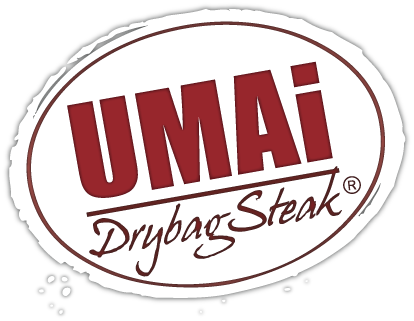Richard who is an UMAi Dry user, came up with a solution to a problem that many UMAi Dry users face when trying to seal a large 16-22 lb piece of beef using a basic household vacuum sealer like this Foodsaver V2244. This solution allows the user to have more control over the sealing process. Here is Richard’s account:
I recently decided to modify my vacuum sealer so that I no longer am dependent on the automated sealing feature. The sealer I use for the Umai dry bags is a Foodsaver V2244, a pretty basic model.
This vacuum sealer has the pretty much standard controls. One button starts the vacuum and then seals automatically. A second button either stops the vacuum and seals the bag, or simply seals the the bag (for adding a second seal or making bags from the roll material). Some units have more controls, but all should have these two basic functions.
These sealers have a pressure switch which controls when the vacuum is stopped and the seal is made. The assumption from the manufacturer is that the bag has the small channels embossed into the bags which allows the air to escape. The Umai dry bags don’t have these, so occasionally, or more frequently even, the bags form enough of an air tight seal just beyond the unit to allow the pressure switch to actuate the sealing step even though there’s still air in the bag.
Remove, or disable this switch and the vacuum pump will run continuously until you press the seal button. This will allow you to take the time to massage the air out of the bag and make the seal when you are satisfied wit the degree of air removed from the bag.
Of course you loose the automated vacuum sealing feature and probably any warranty you had on the unit.
Removing the switch on my unit was quite easy. Once the unit was opened by removing the bottom there was easy access to the controls. There’s not much in these units. A vacuum pump, a pressure switch, some tubing, a small electric control circuit to time the sealing bar heater/pump operation.
On this unit there is a small tubing which runs from the vacuum pump to a “T”. From the “T” the tubing continues the the sealing chamber as well as a vacuum switch.
Now, here, there are two ways to disable the automation:
1. Remove the vacuum switch from the vacuum tubing altogether. This is what I opted for since this unit is dedicated to dry bags.
2. Add a toggle switch to the circuit which effectively removes the vacuum switch from the control circuit. The toggle switch would let you choose between manual or automatic vacuum/sealing. This may be a better (albeit more work) choice if you use the unit for regular kitchen duty as well as for the dry bags. Depending on the sealer and how the vacuum switch is incorporated it may require some soldering on a circuit board.
Of my unit preventing the switch from being used was simple. Since the tubing from the pump goes to a “T”, and there was enough tubing to to go straight from the pump to the sealing chamber – I simply removed the tubing from the “T” and connected the pump directly to the sealing chamber. The vacuum switch is still in the unit but no longer connected to the vacuum pump. When using the unit the switch never sees vacuum and so the pump will continue to run until you initiate the seal, or the pump overheats.
You still need the vac-mouse to keep some flow across the unit’s gaskets.
A lot of words for a 5 minute job, here are some photos:





